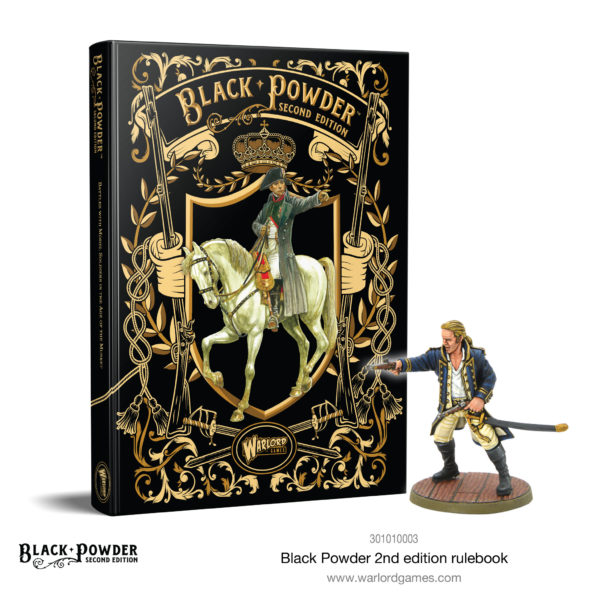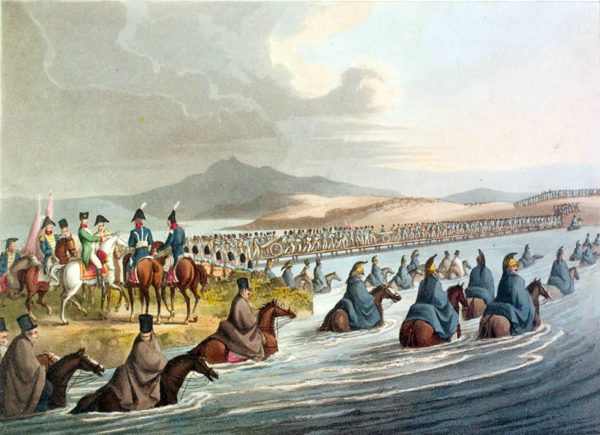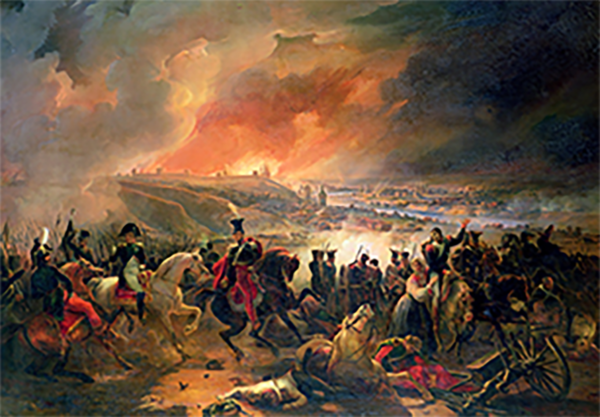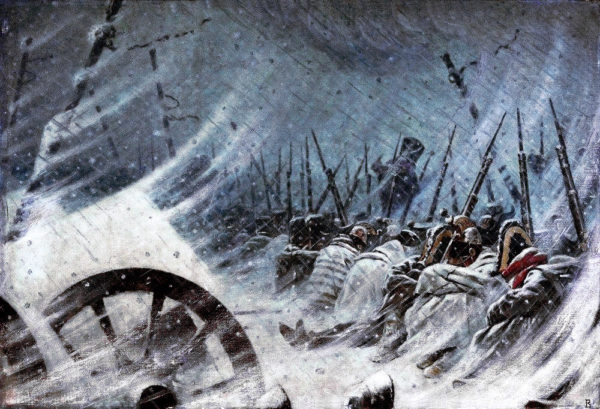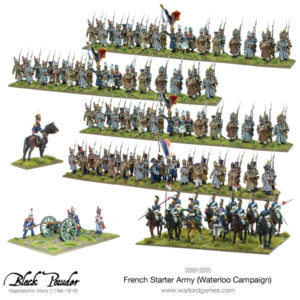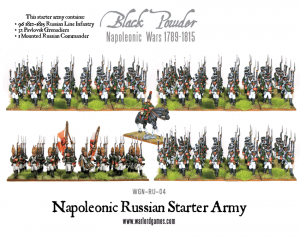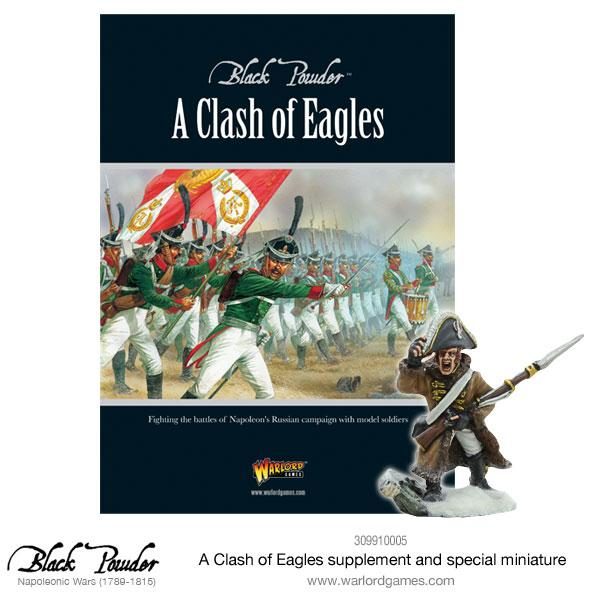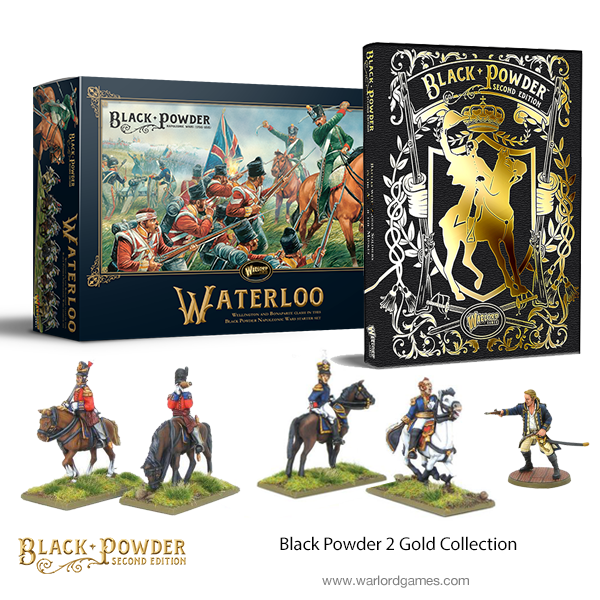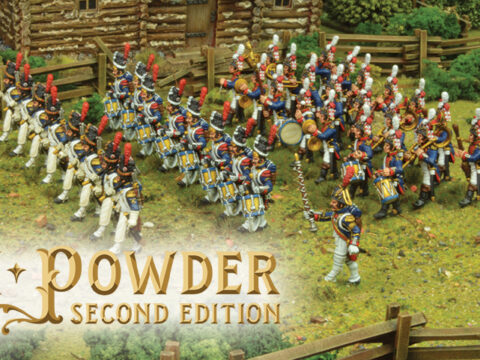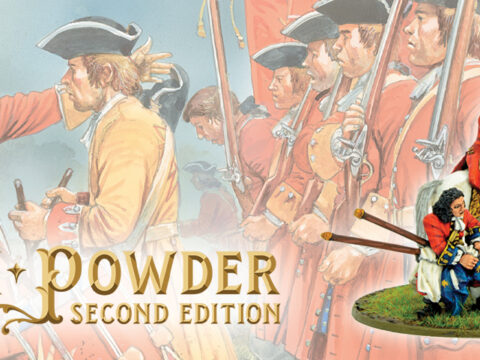As the weather gets wintery, we’re continuing our series of articles on Black Powder 2 with a long march into Russia. This week we’re looking at Napoleon’s Russian campaign.
Despite being the undisputed master of Europe, Napoleon was plagued by an unceasing guerilla war on the Iberian peninsular and growing discontent within his empire. Trade between the Russian Empire and Great Britain undermined Napoleon’s blockade, while French meddling in Poland and Lithuania was particularly unwelcome.
As one of the last challenges to Napoleon’s complete mastery of Europe, the conflict between France and Russia was inevitable.
Having assembled the largest army in the history of warfare, Napoleon marched across the Polish border into western Russia. Stymied by bad weather in Lithuania, the French began to suffer immediate logistical problems, with their supply train unable to keep pace with the forced march and the countryside unsuitable for foraging.
A lack of roads or tracks hindered the advance across country, the vast quantity of horses and wagons turning the ground into a muddy quagmire. The oppressive heat and unsanitary conditions caused disease to spread like wildfire through the ranks, leading to numerous deaths and desertions.
On top of all of this, the vaunted French light cavalry found themselves massively outclassed by their Russian counterparts and were unable to locate or pin down the steadily retreating Russian army. These skirmishes began to bleed the ranks dry.
When one wing of the advance was able to pin the Russians in place, the horrendous terrain and logistical situation would leave Napoleon’s other forces unable to capitalise on any successes.
Smolensk
Despite orders to the contrary, Barclay, commander of the Russian army in the field continued to retreat. Whenever he did halt and begin to dig in, the rapid French advance would force him to fall back once again. In his wake, he left a trail of smouldering ruins and fire-ravaged fields, denying any comfort to the advancing enemy.
Pressure from the Tsar and other members of the Russian aristocracy forced Barclay to give battle at Smolensk. Rather than meet the numerically superior French army in the field, he garrisoned the historic fortress-city of Smolensk. The French army invested the city and began an intense bombardment with their heavy field guns, setting most of the city ablaze.
An infantry assault captured two of the outer suburbs but were unable to scale the city walls as they lacked the proper siege equipment. With the city ablaze, rather than needlessly squandering his forces in a costly siege, Barclay retreated over the Dnieper river, leaving Smolensk to the French.
While on paper, Napoleon had won a great victory, the reality was different. Much of the city was a smouldering ruin, denying the French an important supply base and the Russian army was still mostly intact and able to give battle.
Decidedly unhappy with how Barclay had conducted the war thus far, Tsar Alexander replaced him with Prince Kutuzov. Unwilling to retreat any further and effectively abandon Moscow, Kutuzov took his stand near a village called Borodino and set the stage for the bloodiest episode of the Napoleonic Wars.
Borodino
The Russian army raised an elaborate system of redoubts along the banks of the Moskva river and one of its tributaries. On their right flank, favourable terrain and extensive earthworks rendered the Russian position unassailable, so much of the action happened on the left, where poorly erected defenses and flatter ground favoured the French assault.
Even by Napoleonic standards, this battle was a particularly brutal affair. Repeated French attacks and Russian counter-attacks would drive back and forth across ground choked with the corpses of men and horses.
By noon, the weight of French artillery began to tip the scales in their favour, but the infantry were unable to force a decisive breakthrough and overwhelm the Russians. The battle of attrition continued into the afternoon with the French capturing key fortifications but failing to break the Russians who began a general retreat.
Both sides had been so badly mauled that the French remained on the field while the Russians withdrew to the south, leaving the road to Moscow open.
A week later, Napoleon would enter the Russian’s spiritual capital. Despite the city’s surrender, Russian troops managed to set several fires across the city, which would burn unchecked despite the best efforts of the disorganised French. In the end, four-fifths of the city would burn to the ground.
The Long Retreat
Napoleon and his army would remain in the ruins of Moscow for five weeks, anxiously awaiting the surrender of Tsar Alexander. Despite the loss of his spiritual capital, capitulation was the last thing on the Tsar’s mind, aware of the French army’s precarious position and the imminent arrival of the punishing Russian winter.
With no surrender forthcoming, his armies bled dry by constant skirmishes with the Russians, Napoleon was forced to begin the long march back to Paris.
At Maloyaroslavets, despite repulsing the attacking Russians, the French found themselves travelling down the Smolensk road they’d advanced up mere weeks before. Already stripped bare, the countryside along the French line of retreat was unable to support such a large body of men.
The already weakened supply chain was constantly harried by bands of Cossacks and Russian cavalrymen, worsening the supply situation further. The majority of the army’s mounts and draft animals died of exhaustion or starvation, with the survivors being slaughtered for food by hungry soldiers. The French cavalry ceased to exist, with the troopers forced to march alongside the infantry.
On 14th December 1812, 22,000 emaciated French soldiers staggered across the Russian border into relative safety. The campaign was over.
The Russian Campaign in Black Powder
Napoleon’s advance into Russia, and subsequent retreat is the perfect backdrop for games of Black Powder. The campaign contains some of the biggest and bloodiest battles of the Napoleonic Wars, involving hundreds of thousands of infantry, cavalry and artillery.
It’s an opportunity to create some fantastic winter scenery and bases, along with modelling some of the most iconic units of the French army, including the soldiers of the Imperial Guard.
The best place to start is one of the fantastic starter sets for the French and Russian armies. Each one contains plenty of miniatures to kick-start your collection and see you through your first few games.
You’ll also want to grab the magnificent Clash of Eagles supplement, which contains a whole treasure trove of background information, additional army lists, painting guides and scenarios for all the key battles of the campaign. You’ll also get a free Marshal Ney miniature.
Get Black Powder 2!
We’ve got a few copies of the Black Powder 2 Collector’s Edition available, so we’ve created a fantastic collector’s bundle that gives you the Waterloo starter set and some FREE metal mounted officers!
Grab a copy of Block Powder from our webstore today, complete with a free Lucky Jack miniature!
